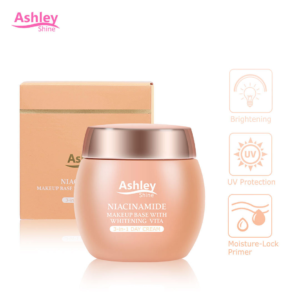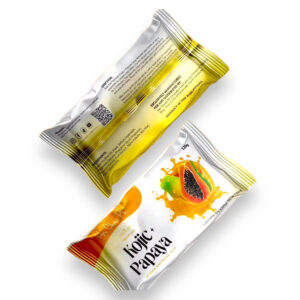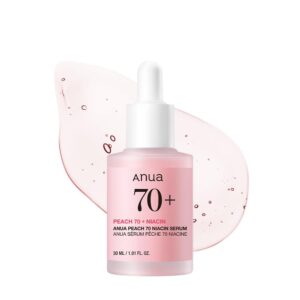Table of Contents
The 411 on Hyperpigmentation: Debunking Common Myths and Misconceptions
Hyperpigmentation is a common skin concern that affects millions of people worldwide. It refers to the appearance of darkened skin patches or spots that can be caused by a variety of factors, including sun exposure, hormonal changes, and skin injuries. Despite its prevalence, there are many misconceptions surrounding hyperpigmentation, which can lead to frustration and disappointment for those who struggle with it. In this article, we will debunk common myths and misconceptions about hyperpigmentation, providing you with a clearer understanding of this skin condition and the most effective ways to treat it.
Myth #1: Hyperpigmentation is a Permanent Condition
One of the most common myths about hyperpigmentation is that it is a permanent condition. While it is true that some forms of hyperpigmentation can be difficult to treat, it is not always a permanent condition. In fact, many forms of hyperpigmentation can be effectively treated with topical creams, chemical peels, and other non-invasive therapies. With the right treatment plan, it is possible to reduce the appearance of hyperpigmented skin and achieve a more even tone.
Myth #2: Hyperpigmentation is Only Caused by Sun Exposure
Another common myth about hyperpigmentation is that it is only caused by sun exposure. While sun exposure is a common cause of hyperpigmentation, it is not the only cause. Other factors, such as hormonal changes, skin injuries, and certain medical conditions, can also contribute to the development of hyperpigmentation. For example, pregnancy, menopause, and other hormonal changes can cause hyperpigmentation due to changes in melanin production. Similarly, skin injuries, such as burns, scars, and acne, can also lead to hyperpigmentation.
Myth #3: Hyperpigmentation is Only Affecting Dark-Skinned Individuals
This myth is particularly harmful, as it perpetuates the idea that hyperpigmentation is a problem exclusive to people of color. In reality, hyperpigmentation can affect individuals of all skin tones and types. While it is true that people with darker skin tones may be more prone to hyperpigmentation due to their natural melanin production, it is not exclusive to them. Anyone can develop hyperpigmentation, regardless of their skin tone or type.
Myth #4: Hyperpigmentation is Only Treated with Chemical Peels
This myth is another common misconception about hyperpigmentation. While chemical peels can be an effective treatment for hyperpigmentation, they are not the only option. Topical creams, such as hydroquinone, retinoids, and vitamin C, can also be effective in reducing the appearance of hyperpigmentation. In addition, laser therapy, microneedling, and other non-invasive treatments can also be used to treat hyperpigmentation. The best treatment for hyperpigmentation will depend on the individual’s skin type, tone, and the underlying cause of the hyperpigmentation.
Myth #5: Hyperpigmentation is a Sign of Poor Skin Care
This myth is particularly damaging, as it implies that individuals who struggle with hyperpigmentation are not taking good care of their skin. In reality, hyperpigmentation can occur due to a variety of factors, including genetics, hormonal changes, and environmental factors. It is not a reflection of one’s skin care habits. In fact, good skin care practices, such as using sunscreen, moisturizing, and protecting the skin from environmental stressors, can actually help prevent hyperpigmentation.
Conclusion
Hyperpigmentation is a common skin concern that affects millions of people worldwide. By debunking common myths and misconceptions about hyperpigmentation, we can better understand this condition and develop effective treatment plans. Remember, hyperpigmentation is not a permanent condition, and it is not exclusive to people of color. With the right treatment plan and good skin care practices, it is possible to reduce the appearance of hyperpigmented skin and achieve a more even tone.
Recommended Products
-
Product on sale
 Arbutin 3X Skin Whitening Collagen Body Cream 250gOriginal price was: KD8.000.KD7.000Current price is: KD7.000.
Arbutin 3X Skin Whitening Collagen Body Cream 250gOriginal price was: KD8.000.KD7.000Current price is: KD7.000. -
 Gmeelan Orange Enzymes Exfoliating Brightening Gel – 50gKD4.500
Gmeelan Orange Enzymes Exfoliating Brightening Gel – 50gKD4.500 -
 Zero Spot Lotion 60ml | Clear & Even SkinKD5.000
Zero Spot Lotion 60ml | Clear & Even SkinKD5.000 -
Product on sale
 You Glow Babe Beauty White REJUV SETOriginal price was: KD8.000.KD6.000Current price is: KD6.000.
You Glow Babe Beauty White REJUV SETOriginal price was: KD8.000.KD6.000Current price is: KD6.000. -
 Prestige Kagayaku Bleaching Soap 75gKD2.000
Prestige Kagayaku Bleaching Soap 75gKD2.000 -
 Ashley Shine Niacinamide Whitening 3 in 1 Day Cream – 50gKD4.000
Ashley Shine Niacinamide Whitening 3 in 1 Day Cream – 50gKD4.000 -
 Her Choice Kojic Papaya Soap 120gKD2.500
Her Choice Kojic Papaya Soap 120gKD2.500 -
 Anua Peach 70 Niacin Serum 30mlKD8.000
Anua Peach 70 Niacin Serum 30mlKD8.000 -
 RDL Kalamansi Whitening Soap – 135gKD1.250
RDL Kalamansi Whitening Soap – 135gKD1.250




